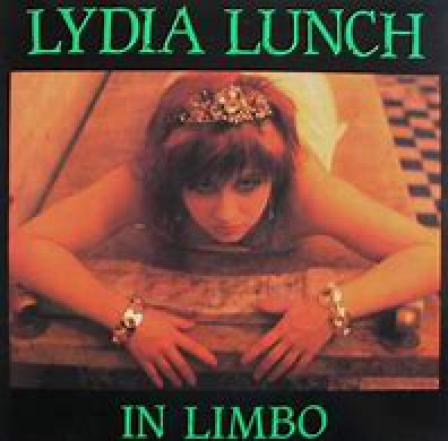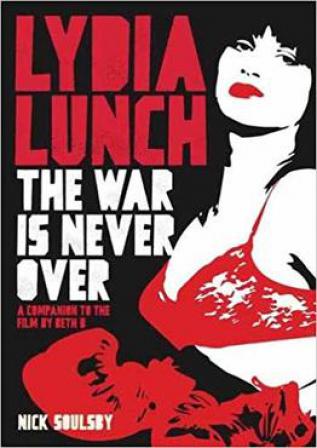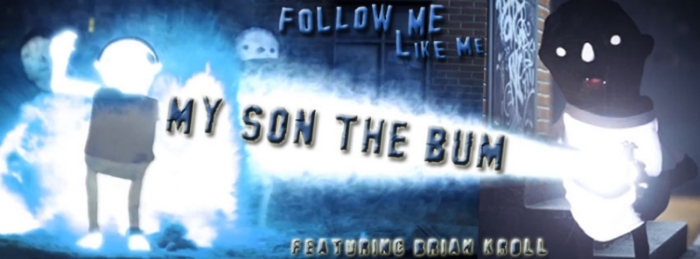The War Is Never Over is a new book written by Nick Soulsby about the relentless Lydia Lunch, the cultural powerhouse and unfaltering fighter seeking to redress imbalance across sexuality, genders, age, class and race. Art is her weapon, inequality her target.
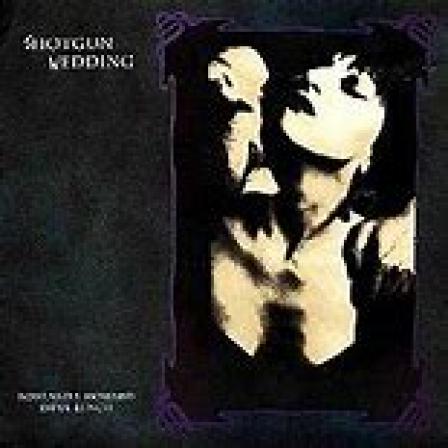
Nick’s book is a companion piece to the documentary film of the same name premiered last year in New York City. The film is produced by the equally undeviating Beth B, who has constantly provided a platform for artistic expression for the same relentless, and thoroughly justifiable, battle.
Nick Soulsby has written five books prior to this. Three on Nirvana (I Found My Friends: The Oral History Of Nirvana, Cobain on Cobain, and Dark Slivers: Seeing Nirvana in the Shards of Incesticide), one on the collaborations of Thurston Moore (We Sing A New Language) and another about Swans (Silence and Transcendence). He writes with genuine zeal and passion.
Following its premiere, the film has been screened in a handful of selected venues prior to the spread of Covid 19. A screening at the South By South West festival was cancelled. Therefore, the book, which is published this month, becomes particularly important.
The format is a chronological series of interviews with contributors who were close to Lydia at various points throughout her largely project based career. The book is no dull biography, just as the film no boring rockumentary. The film follows her band Retrovirus on a 2017 tour, and although the two very much compliment each other, Nick’s book stands up on its own. In spring 2020, it needs to.
An introduction, helpful to anybody new to Lydia, kicks things off by dividing her career into periods of time. For example, her early deconstructive punk bands and initial forays into short independent films, fill up 1977-84. Similarly, there is a timeline and list of works at the end, together with a paragraph on each contributor. Helpful and practical. The introduction, written in Nick Soulsby’s own words, is written with feeling, the author making clear his motivation -
‘I’ve always wanted the books I create to be a passion, not just another careerist obligation.’
The layout is in chapter form, with each chapter basically relating to a specific project. It is purely pragmatic and makes sense.
The first entry in the prologue very much sets the tone. In an interview, Lydia describes an incident which provided a blueprint for the way she conducted the rest of her life.
‘I’m like I won, and I will always win’. – Lydia Lunch
This positivity, taken from a potentially bad situation, drives Lydia, and it also drives Nick’s book. To take inequality, to take victimisation, and turn it round. The war is indeed never over, so you must fight it every day.
‘The victim becomes the victimiser.’
Lydia is talking about the film Vortex. Possibly shocking to some, but all very real.
The book starts by setting the scene of New York City in the mid-late seventies.
‘New York looked like Berlin after the war.’ – Vivienne Dick, filmmaker
Lydia’s arrived as a confident young teen ready for the battle. She changed her identity from Lydia Koch to Lydia Lunch as she stole food in order to share it with Mink Deville.
‘It’s Lydia Lunch! It’s Lydia Lunch!’ exclaimed a grateful Willy Deville.
The sense of community among young, penniless and determined characters in the lower east side emanates from the pages as well as highlighting the dangers of NYC at the time. The use of over eighty interviewees spread throughout the document helps, giving a range of viewpoints. Compare Vivienne Dick’s quote (above) with musician Jim Thirlwell’s opinion of NYC at the time –
‘I didn’t find it particularly dangerous. There was a real sense of community, the arts and music community played out there, a lot of creativity, and it was easy to start a gallery or a performance space.’
This quote and counter-quote approach is repeated throughout and is successfully pieced together.

The reader is left in no doubt of Lydia Lunch’s persona from the off. Contributors queue up to give their early impressions of her. Filmmakers Beth B and Vivienne Dick, Thurston Moore of Sonic Youth, Donita Sparks (L7), collaborator JG Thirlwell, to name but a few. However, it is usually Lydia herself who, inevitably, gives the reader the best material. Her take on herself during those early days best sums things up –
‘Black-haired, traumatising, sadistic, baby-faced killer. I scared people.’
The book is not a list of dates or accomplishments, just concise, snappy contributions. For example, Lydia describes her first band, the brutalist Teenage Jesus and The Jerks, thus –
‘It was all a basic temper tantrum.’
Whilst Jim Sclavunos (bass player, also with Nick Cave) termed it a good ‘hate-fuck’. By the time the chapter is flowing the reader has a good impression of how they sound, got on and the reaction of their audience. Even if he/she has never heard the band. The book paints its pictures well, through a collage of words from third parties.
The same is true with Lydia’s other band projects. 8 Eyed Spy were described by Thurston Moore as –
‘a bit more accessible but still crazy music.’
And all of Lydia’s ‘bands’, including 3.13, Beirut Slump, Devil Dogs, Retrovirus, Big Sexy Noise and more, get similar treatment. There is input from band members, contemporaries, ‘industry’ figures and friends. And it’s warts and all. And not every episode ended well –
‘I never got the impression from Lydia, however, that this was anything but a filler band to go between what she had done and what she wanted to do next.’ – Rudy Protrudi, Fuzztones founder, talking about the band Devil Dogs
Lydia’s collaborations get many a mention. As does her solo music. The chapter on The Queen Of Siam (1980), her debut solo record, is a case in point. It is an early example of her diversity. More deconstructive rock n roll? More dirty punk rock? Hell no. How-about a record incorporating dance, noir jazz, big band and pop on one glorious release? Hell yes.
https://www.bing.com/videos/search?q=lydia+lunch+spooky&qpvt=lydia+lunch+spooky&FORM=VDRE
Berlin, hot on the heels of Bowie and Pop’s time there, represented a natural location for Lydia. Again, Nick paints the picture well, using the Berlin, almost reversing the comparison of NYC to Berlin from earlier in the book –
‘Berlin was an alternative cultural centre … People from all over went there because they didn’t like their own countries-it had an entire parallel world going on.’ – Mick Harvey, The Birthday Party, Nick Cave and the Bad Seeds, PJ Harvey
Collaborations with The Birthday Party (‘there was a lot of prejudice against me because I wasn’t a heroin addict’ – Lydia), Die Haut, Marc Almond and Einsturzende Neubaten are well covered in the chapter London Agony: Berlin Ecstasy. As is her later, superb voodoo tinged discordant blues rock work with Cypress Grove and Big Sexy Noise, as is the fantastic Shotgun Wedding album she made with Rowland S. Howard –
‘An essential document.’ – Record Collector
Lydia’s film career obviously receives plenty of attention. And rightly so. As with her music and other forms of expression, the DIY ethic resonates, with self-financed works a-plenty. Her partnership with Beth B stretches back to her early days on The Bowery, and Vivienne Dick is another filmmaker who worked with Lydian from that time. The Girls On Film chapter reads in a similar way to Baby Doll one – it describes a vibrant, raw environment looking to destroy what has been done before, this time using Super-8s instead of guitars. ‘No-Wave’ cinema instead of ‘No-Wave’ music. Deconstruction with no limits.
‘Lydia rapidly becomes an iconic presence in the No-Wave cinema scene, with a number of filmmakers utilising her fearlessness in front of camera.’ – Nick Soulsby
Her early films paved the way for later, cult legendary movies. In all Lydia was involved in nearly a hundred pieces of film. From classic short super 8 films to full-scale movies. Musical interpretations (videos, really), documentaries, noir, b-movies, psychodramas. Some get their own chapter (The Right Side of My Brain, Fingered), and input from Beth B, Vivienne Dick and Richard Kern, appears throughout the book. Her impact on others through her films should not be under-estimated –
‘When women are sexually abused or involved in sexually violent relationships at a young age, it’s most likely that that’s going to be the relationship model for them their whole lives. Being lucky enough to be introduced to Lydia’s work at a young age allowed me to see it differently and allowed her to be my voice until I could find my own voice and never be a victim again.’ – Kathleen Fox, producer
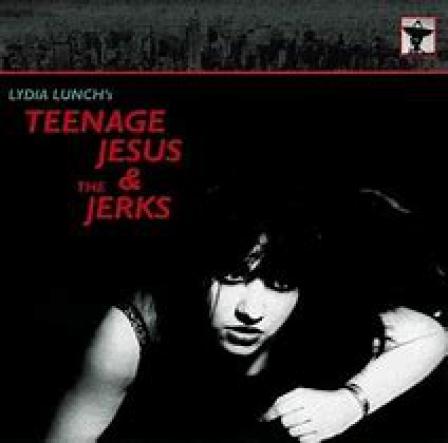
Powerful stuff. Inspirational stuff. Worth the cover price for the book (and film) alone. The way Nick has highlighted passages like this (there are more), and how they fit into this retrospective is one of its main strengths.
Lydia’s sexuality, and how she uses sex, is a consistent theme. It is reality, not to be feared. She fights against abuse and the trauma. Trauma is not something that can be fixed. This is emphasized throughout the book. Treatment, drugs, whatever, do not fix it. The battle never goes away. Not completely. There can be healing, though. And artistic expression is a weapon against trauma; it brings people together.
‘Over and over again, you see Lydia expressing herself through nudity, through eroticism, through fantasy, in a brutal an unapologetic way,’ – Ron Athey, performance artist
Nowhere is this more apparent than in the portrayal of her theatrical work, South Side Of Your Border. Although seen by less than two hundred people, the impact of this ‘shocking’ (depending on one’s view) work would reverberate. Family abuse, paedophilia and ultimately, control. Art as a weapon, very definitely. No spoilers – read yourself if you don’t know this play already.
‘It had a cathartic effect – either consciously or unconsciously – that made her a great artist.’ – Don Bajema, actor and writer
This is a warts and all retrospective. The final chapter unashamedly reveals a side of Lydia’s character, a kind of alter-ego, so extreme and strong it has its own name. Many a rock book contains only the aspects of the subject’s personality he or she wants them to read about. They are often sanitised. Washed over. This is not the case here. There is no attempt here to hide such things. She even gives this side of her a name – ‘Big Lou’.
‘Big Lou is the embodiment of the absolute homicidal, raging murderer Lydia could be.’ -Weasel Walter
The episode, recounted by Tim Dahl, led Beth B to exclaim –
‘I’m grateful to Tim (Dahl) because I had the material I wanted from Lydia, but I needed somebody to be the witness.’
It is a fitting climax to The War Is Never Over. Again, no spoilers here. You’ll have to buy it. However, there are lighter sides.
Lydia relentless stage persona is constantly on show. But her private, off-stage personality makes for some of the book’s most absorbing moments. Her humour is sharp. She is also domestic, and a fine chef. Not necessarily details in-keeping with someone fighting against the patriarchy.
‘When she found out I was subsisting on mainly fast food, she gave me a few – mandatory – cooking lessons.’ – Glyn Styler
The final word goes to Lydia’s spoken word work. She was a true pioneer of this form of expression, not surprising as it suits her direct approach, uncluttered by guitars, co-stars, drums, galleries or anything else.
‘I brought quite a few to the spoken-word stage for the first time…. I’m the cattle prodder. I came to New York originally to do spoken word, but it didn’t really exist at that point.’
https://www.youtube.com/watch?v=SH_XPGr2Wpg
It gives her the chance to say exactly what she wants to say, in the manner she wants to say it. Of course, there are a whole load of spoken word releases in Lydia’s catalogue, from the early Daddy Dearest, her ode to domestic sexual abuse, and they continue right up to recent times. Not only with the medium itself, but its partnership with experimental music, for example with Joe Budenholzer, which helped to produce some of her best work on the Matrikamantra album. It’s easy just to be subjective, but Nick Soulsby keeps the book fresh and free of any bias, allowing the contributors always to do the talking, informing the reader and helping paint pictures –
‘His (Joe Budenholzer) music flowed like a river – it was like being on a boat in a dangerous river, watching the landscape go by – described to you by Lydia, this catastrophic and bleak landscape.’ – Kamil Kruta, musician
https://www.youtube.com/watch?v=99tNl6Z8r2c
The chapter on Matrikamantra is again full of sharp quote and counter quote, moving the focus around a little whilst keeping the book’s tight. It doesn’t go on and on about what musical programmes were used, or what mixing desk was used. It gives perspectives from people involved in the live shows, from those receiving royalty payments (received promptly, incidentally), and from those involved in the recording process. Like the album, the book never stagnates.
And neither does Lydia Lunch. Her relentless spirit, together with that of Beth B – Lydia said as much in a recent Lydian Spin Podcast – never ends. We need it to stay that way.
For indeed, the war IS never over.
Lydia Lunch: The War Is Never Over, was published by Jawbone Press in April 2020.
